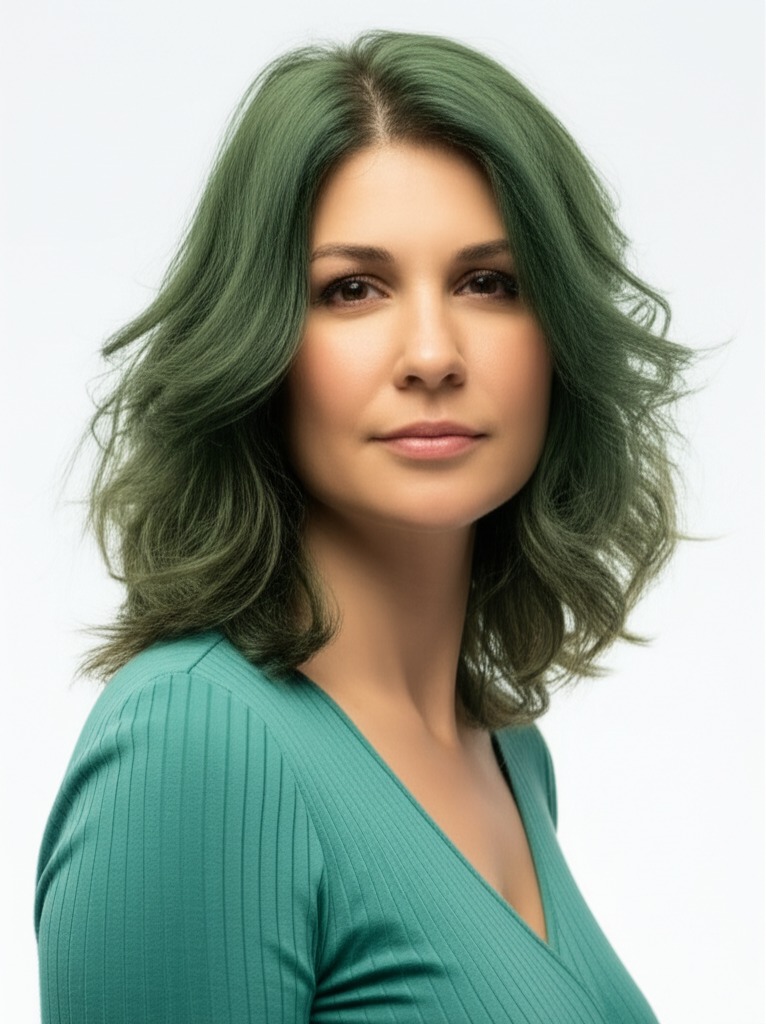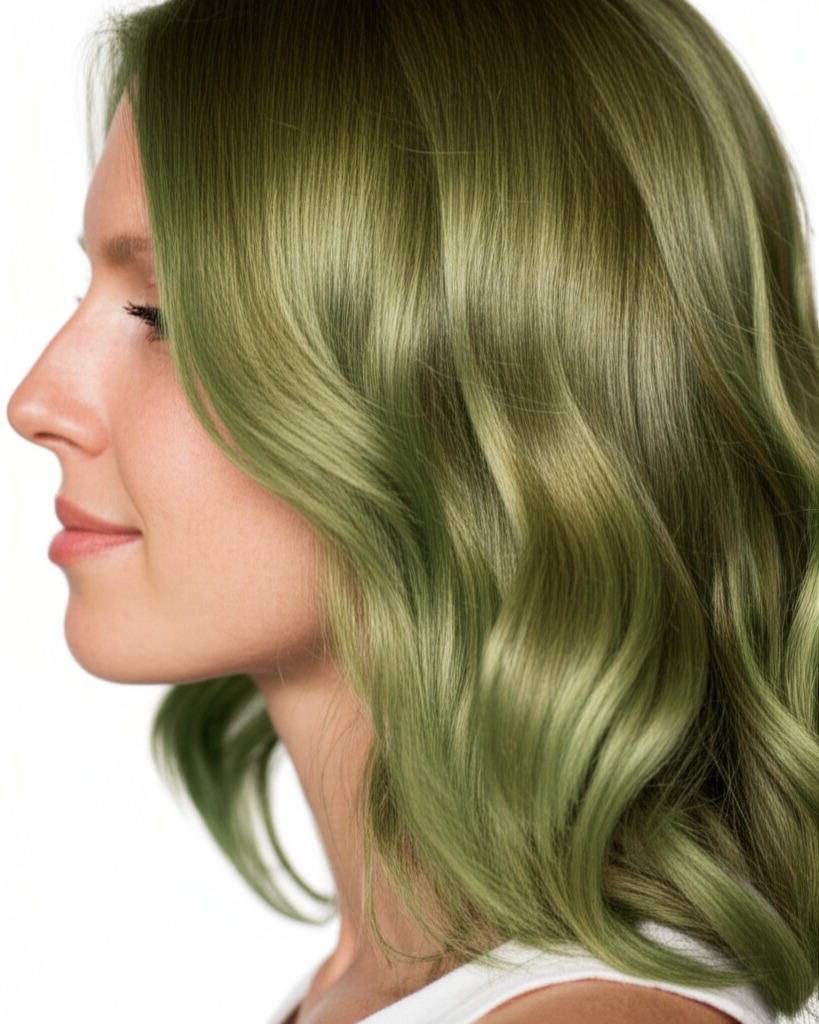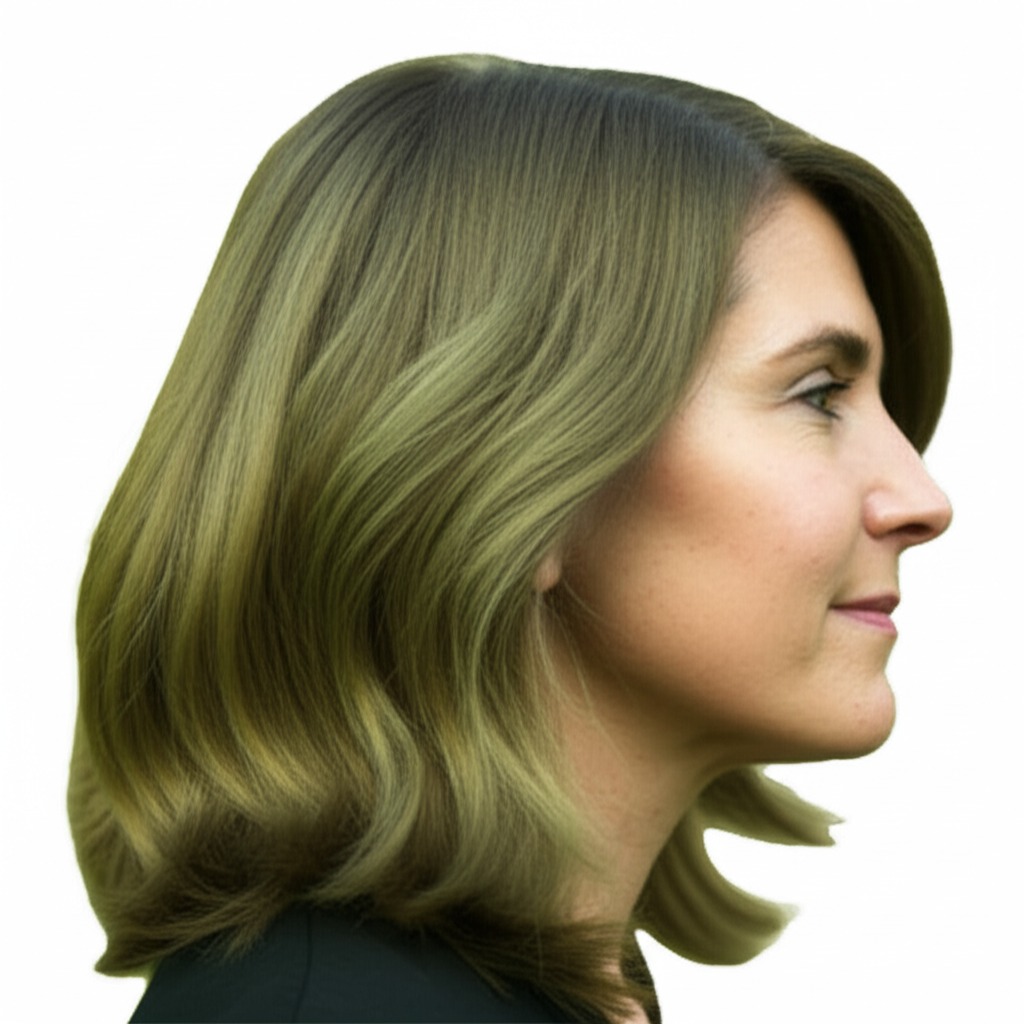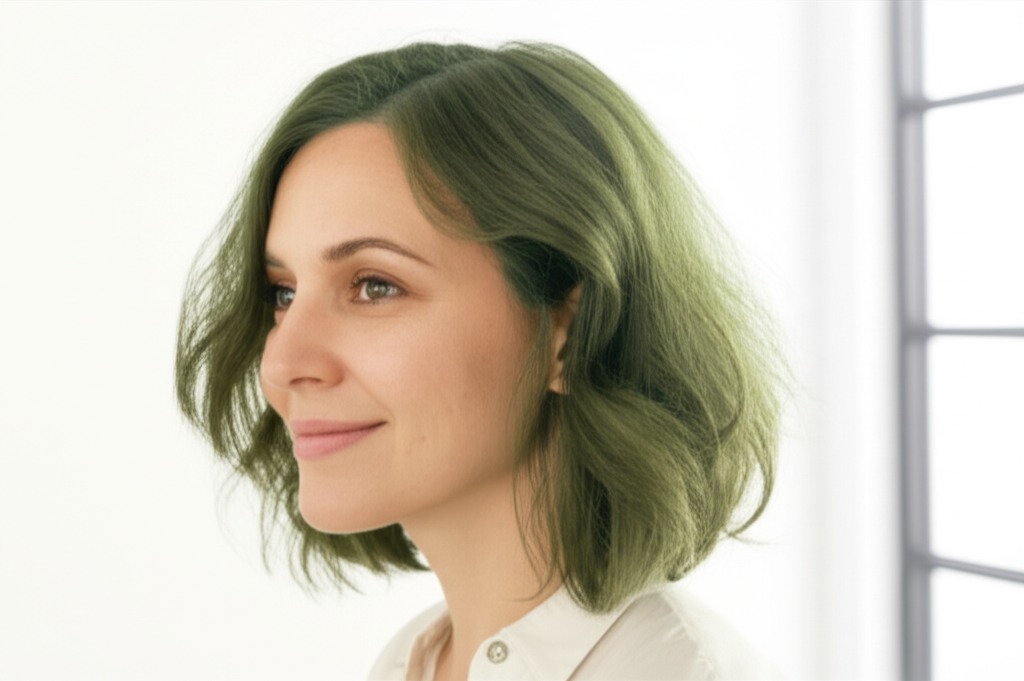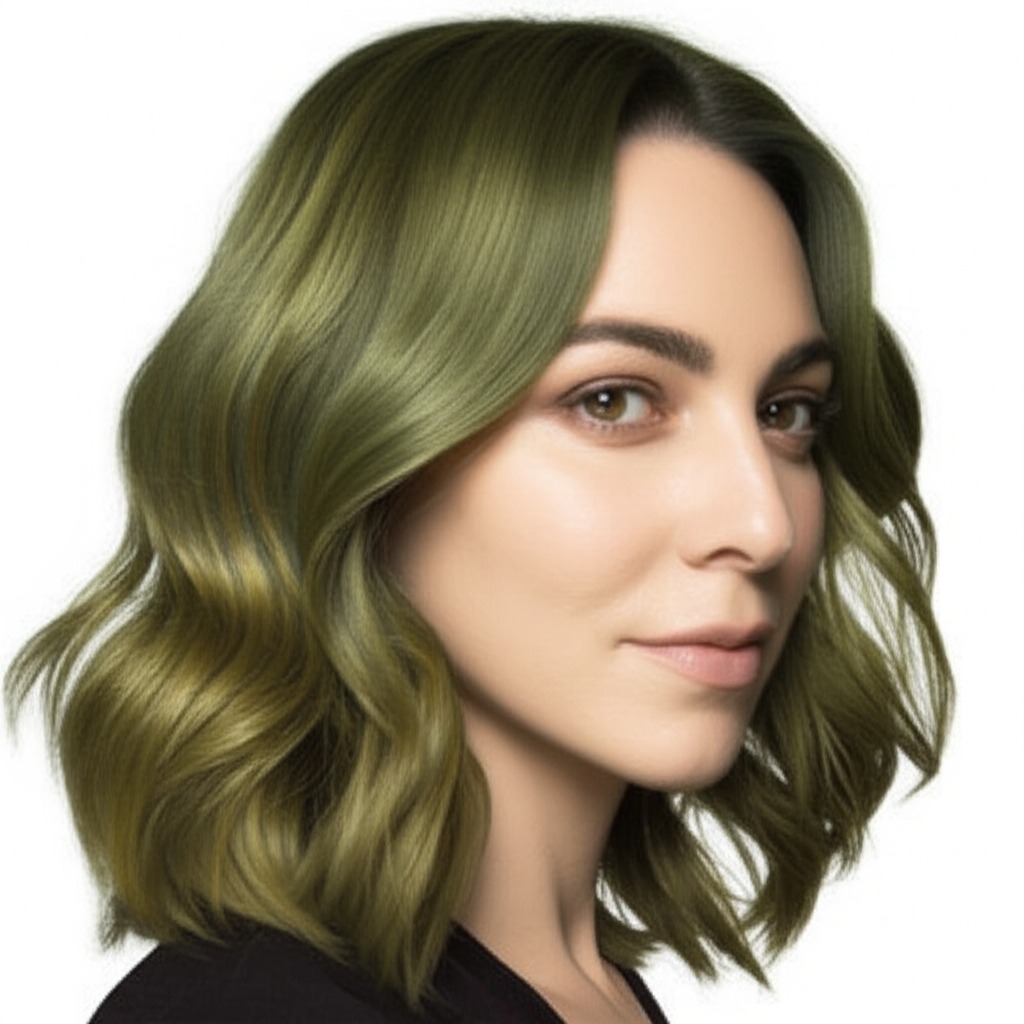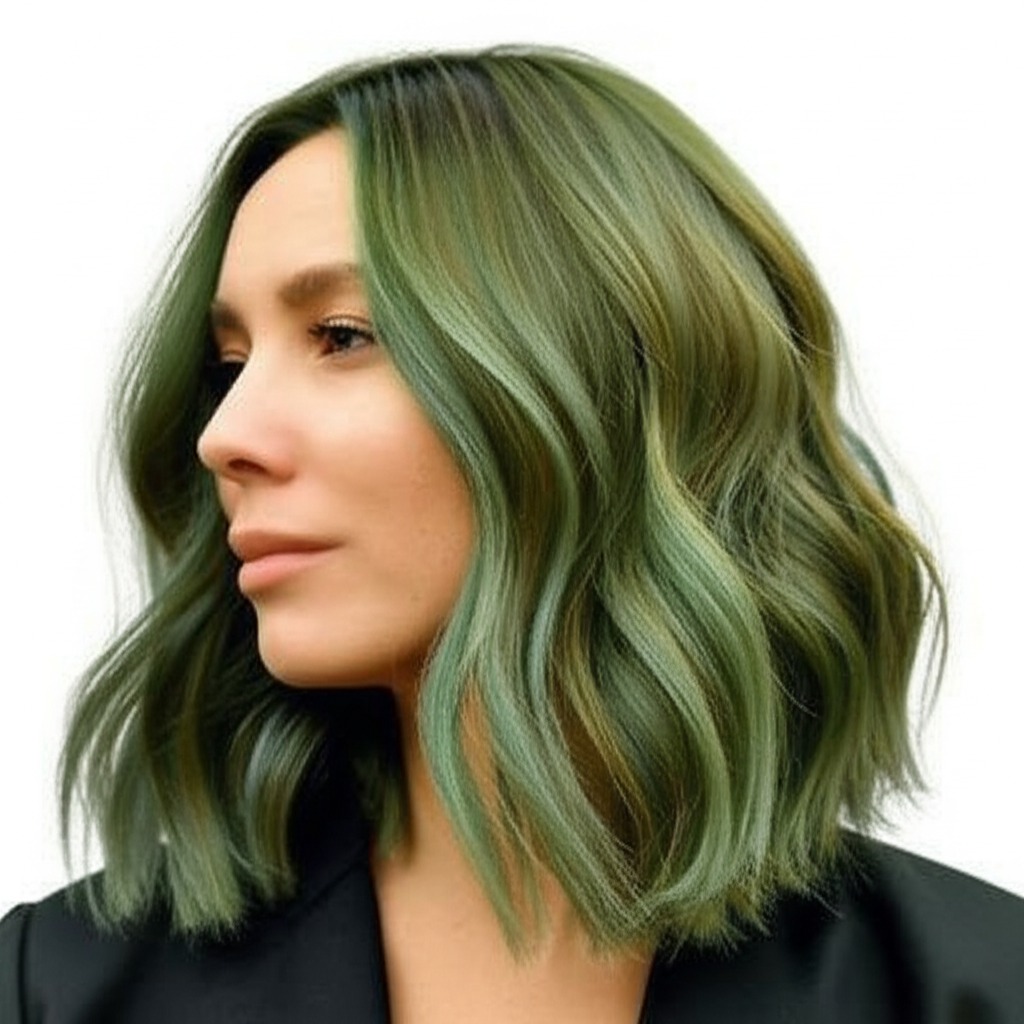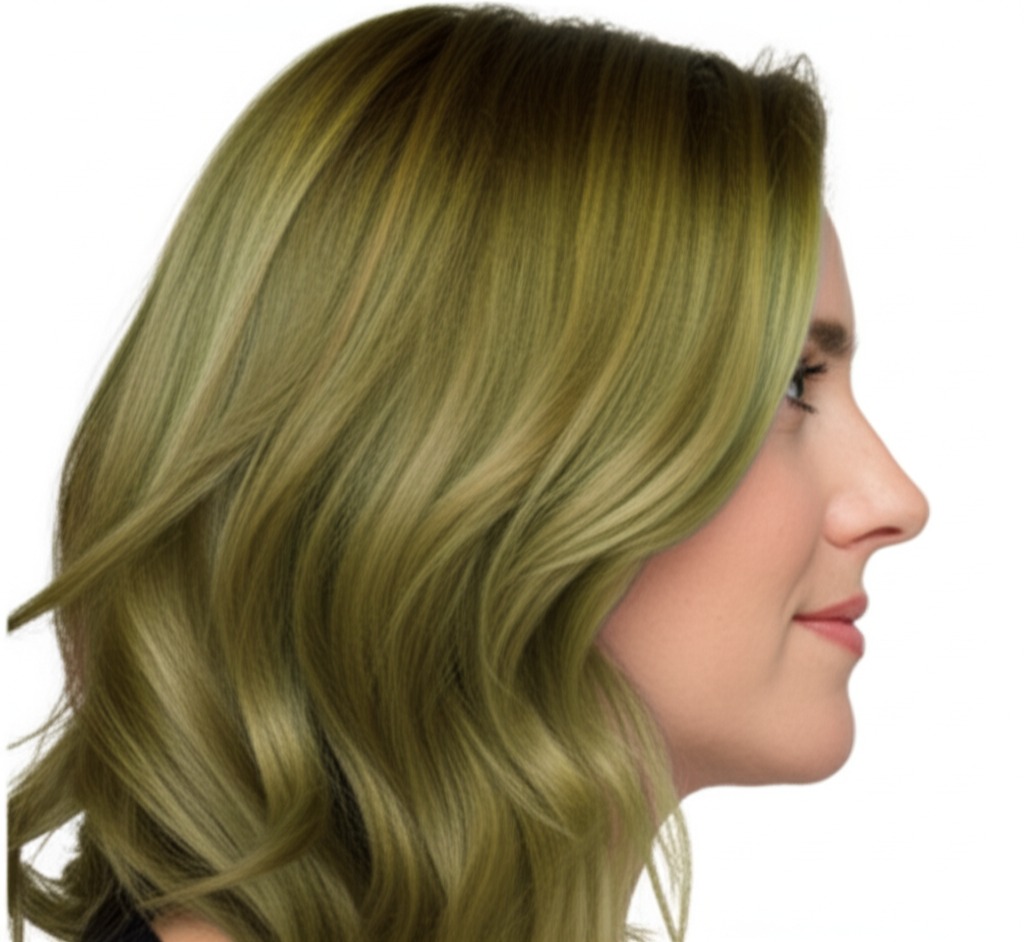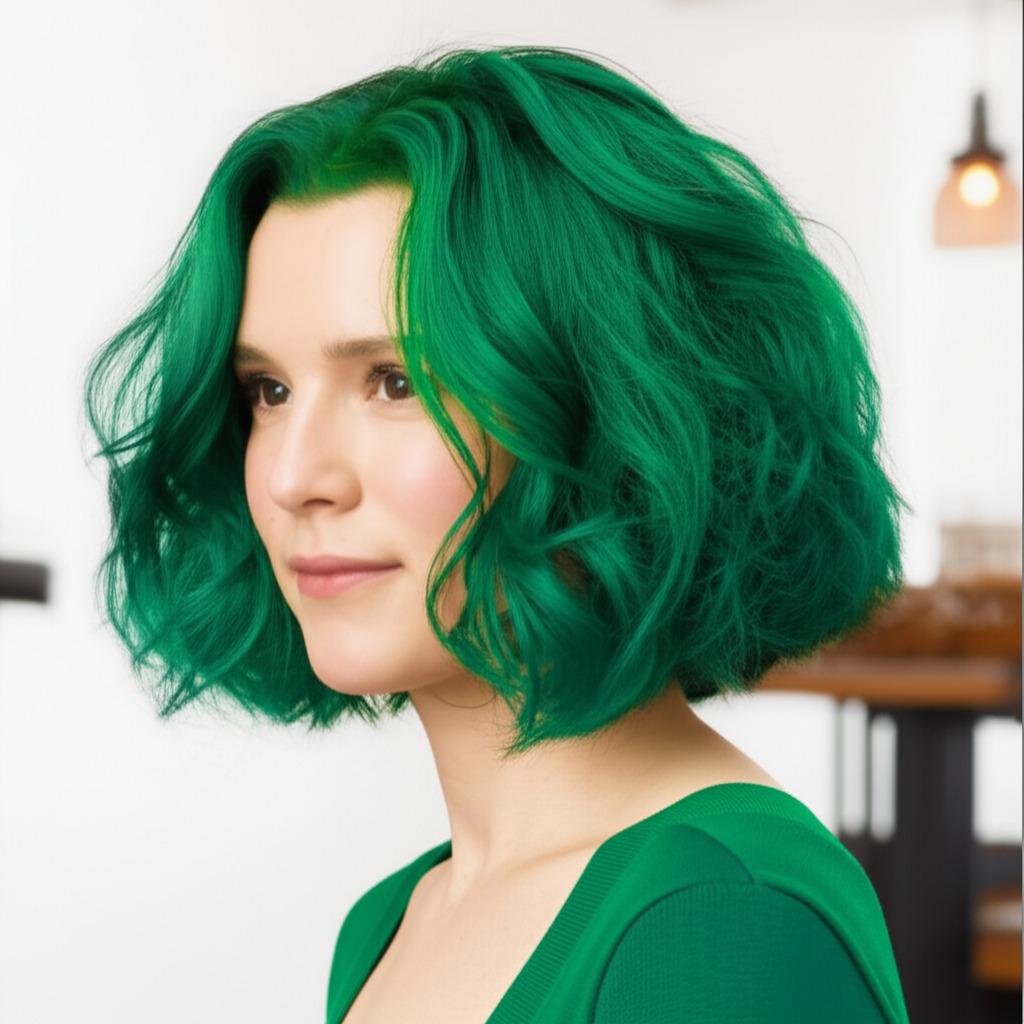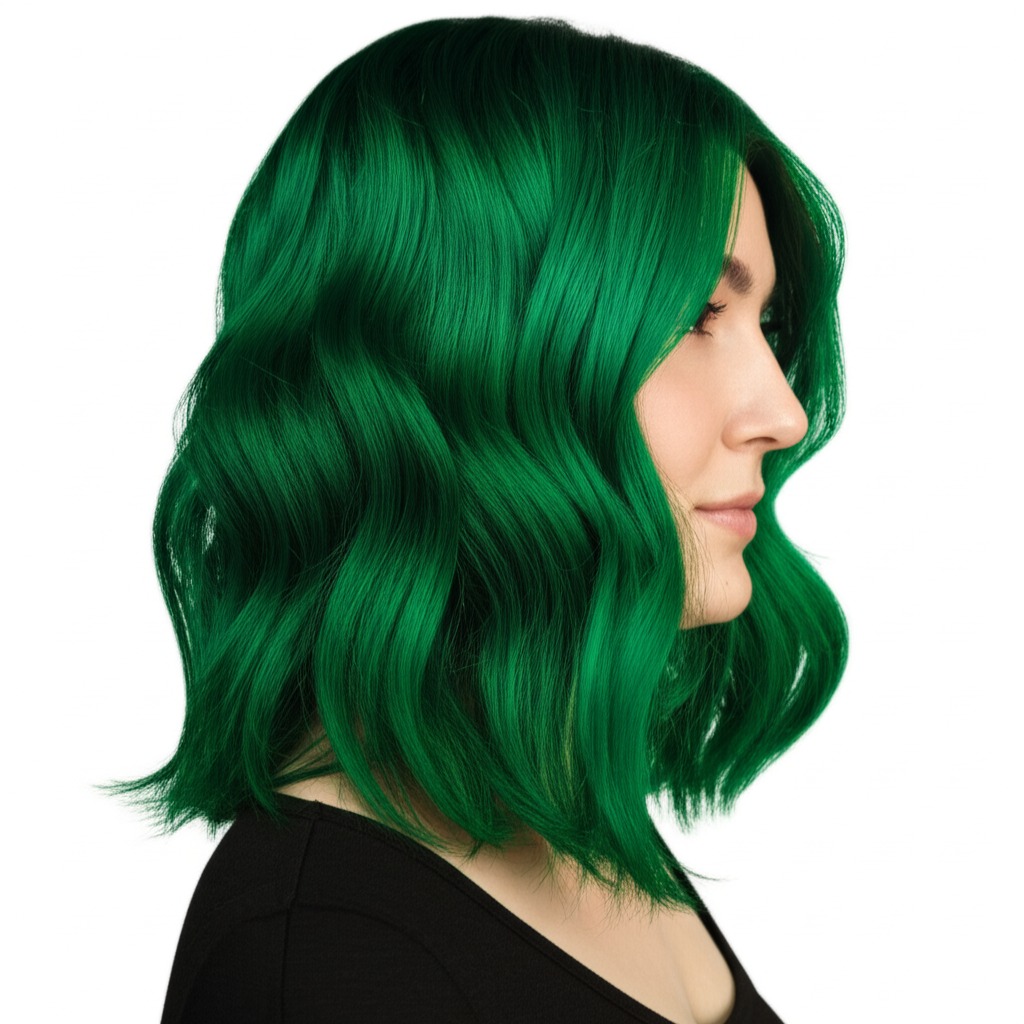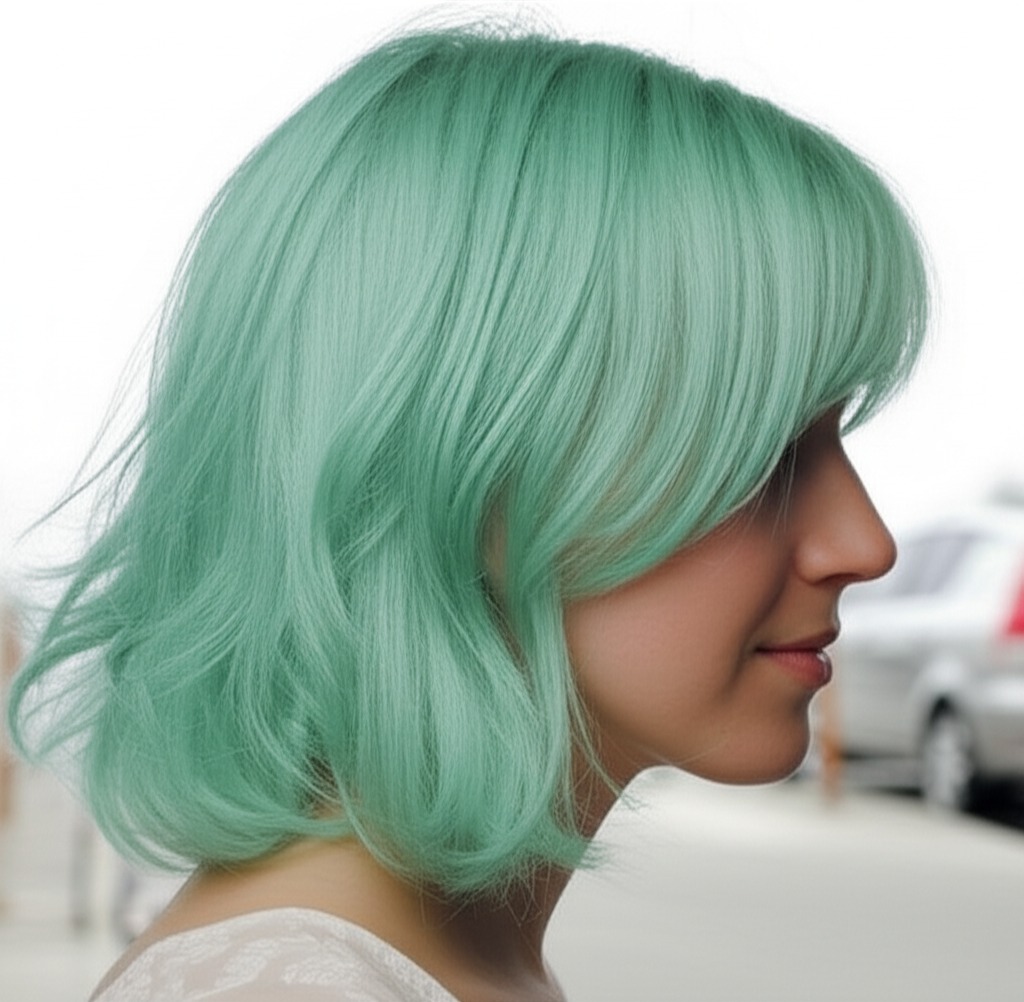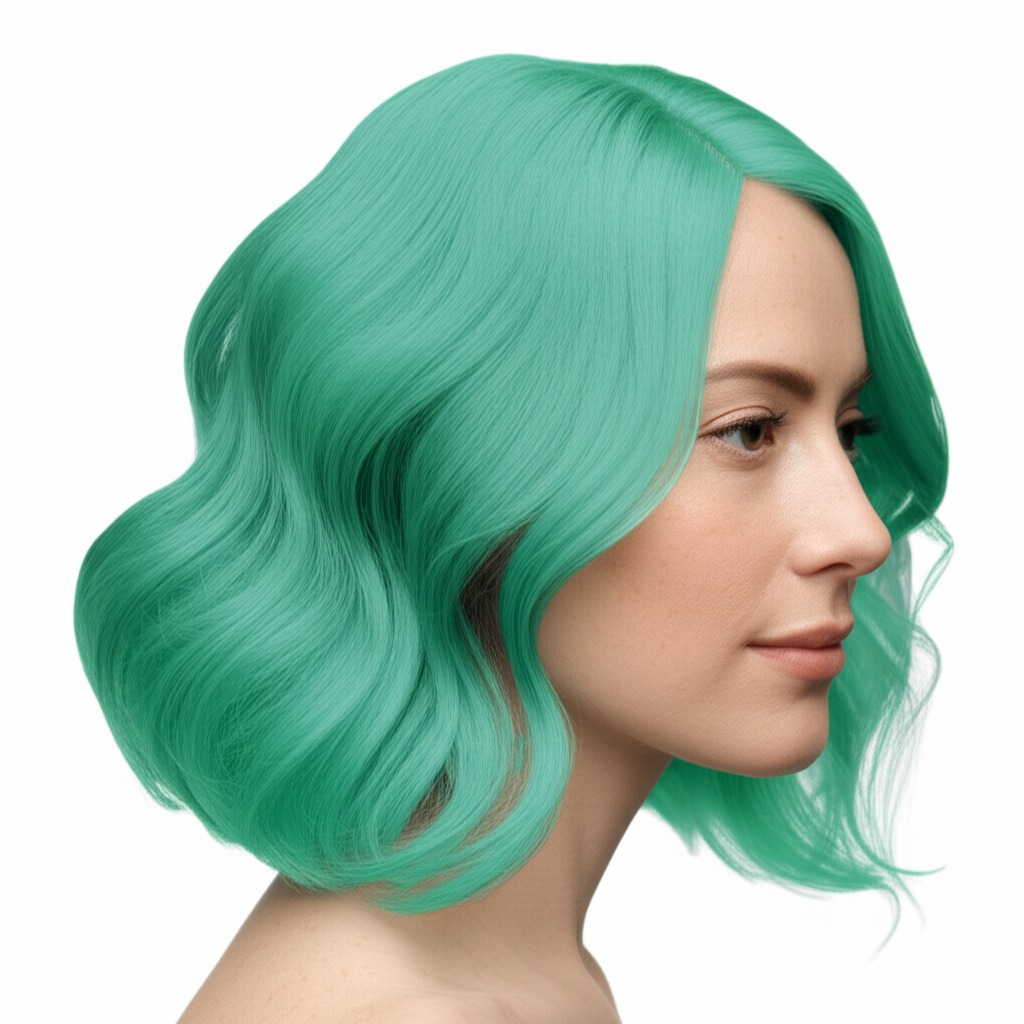#Dive into Olive Green Hair Color: A Guide for Gorgeous Results
Olive green hair is having a moment! It’s unique, earthy, and can be surprisingly flattering when done right. But it's more than just slapping on some green dye – achieving the right olive requires understanding its nuances. This guide breaks down everything you need to know about this captivating color, from undertones to upkeep.
#1. Understanding Olive Green: Shade Definition
Olive green isn’t a single shade; it’s a family of colors! Think of ripe olives – some are darker and more muted, others brighter and with a hint of yellow-green. Here's the breakdown:
- Undertone: This is key. True olive greens have both cool (grey/blue) and warm (yellow/gold) undertones blended together. The balance between these dictates how "olive" it looks – too much warmth can veer into a muddy yellow-green, while too much coolness can become a drab greyish green. A neutral base is ideal for most people to allow the olive tones to shine.
- Depth (Levels): Hair color levels range from 1 (black) to 10 (lightest blonde). Olive green looks best on hair that’s already at least a level 6 or 7 – medium brown to light brown. The darker your starting point, the more muted and sophisticated the olive will appear. Lighter bases can handle brighter, more vibrant olives.
- Dark Olive: Levels 6-8 - Rich, moody, and grounded.
- Mid-Tone Olive: Levels 7-9 – The most versatile range; works well across many skin tones.
- Light Olive: Levels 9-10 – Bright, playful, and requires a very light base to achieve the full effect.
#2. Who Does Olive Green Flatter?
While seemingly bold, olive green can be surprisingly flattering! Here's who typically shines with this color:
- Skin Tone & Undertone:
- Warm Skin Tones (yellow/golden undertones): Olive green beautifully complements warm skin tones, especially if the olive has a slightly warmer leaning. It brings out golden highlights in your complexion.
- Neutral Skin Tones: These are often the easiest to work with! You can experiment with both cooler and warmer olives depending on your preference.
- Cool Skin Tones (pink/blue undertones): Can wear olive, but need a cooler, more grey-toned olive green to avoid clashing. This is less common, as warm undertones in the color can make skin look sallow.
- Eye Colors: Olive green really pops with:
- Hazel Eyes: The earthy tones enhance hazel's complexity.
- Green Eyes: Creates a stunning monochromatic effect!
- Brown Eyes: Adds depth and intrigue to brown eyes.
- Natural Level Starting Points: As mentioned, levels 6-10 work best. Going lighter will require more processing (and potential damage), so be realistic about your hair's health.
#3. Technique Options: From Subtle to Statement
The application technique dramatically impacts the final look.
- Single Process: A solid color applied all over. Best for darker bases or those wanting a fully immersive olive experience. Can appear flat on very fine hair.
- Highlights/Lowlights: Adding highlights (lighter olives) or lowlights (darker olives) creates dimension and movement. Great for adding depth without a full commitment.
- Babylights: Very fine, subtle highlights that mimic natural sun-kissed strands. A soft approach to introducing olive tones.
- Gloss/Toner: A gloss or toner is essential after lightening (if needed) – it refines the tone and adds shine. This can be used to adjust the coolness/warmth of an existing color.
- Balayage-Effect vs Solid: Balayage creates a more natural, blended look with softer roots and gradual transitions. A solid application will have a sharper line of demarcation at the root.
#4. Maintenance & Longevity: Planning Ahead
Olive green isn’t low maintenance, but it can be managed!
- Wash Frequency: Aim for 2-3 washes per week to prevent fading.
- Toner Refresh: Toners are your best friend! Expect to refresh the toner every 4-8 weeks, depending on how quickly your hair fades and how vibrant you want the color to remain.
- Root Growth Pacing: The contrast between olive roots and lighter ends can be beautiful – embrace it! Alternatively, a semi-permanent root touch-up can blend things seamlessly.
- Budget/Time Planning: This is not a budget-friendly or quick process. Expect salon visits every 4-8 weeks (for toner) and potentially more frequent appointments if significant lightening is involved.
#5. Seasonality & Pairing with Cuts: Style It Out!
Olive green's versatility shines through in different cuts and seasons.
- Cuts:
- Bob/Lob: Sharp, modern, and chic – olive looks fantastic on these styles.
- Long Layers: Creates movement and dimension; the color will cascade beautifully.
- Pixie: A bold choice! Olive green can be edgy and playful with a pixie cut.
- Seasonal Tweaks:
- Spring/Summer: Lighter, brighter olives are perfect for warmer months.
- Fall/Winter: Deeper, more muted olives evoke an autumnal vibe.
- Event Picks:
- Work: A darker, more subdued olive is professional and understated.
- Daytime: Mid-tone or lighter olives work well for everyday wear.
- Evening: A brighter, glossier olive will make a statement!
- Weddings: Consider the wedding's overall aesthetic – a softer olive can be romantic and elegant.
#6. At-Home Care: Protecting Your Investment
Proper care is crucial to keeping your olive green vibrant.
- Sulfate-Free Shampoo & Conditioner: Sulfates strip color!
- Clarifying Cadence: While sulfate-free is key, occasional clarifying shampoos (every 4-6 weeks) remove buildup and refresh the tone. Don't overdo it!
- Heat Protection: ALWAYS use a heat protectant before styling with hot tools.
- Color-Safe Styling Tips: Avoid harsh chemicals, excessive sun exposure, and chlorine pools – all can fade color. Rinse hair with cool water to seal the cuticle.
- Product Checklist: Sulfate-free shampoo & conditioner, color-safe deep conditioner, clarifying shampoo (occasional use), heat protectant, leave-in conditioner.
#7. Common Pitfalls: Avoiding Color Disasters
Let's address potential problems and how to prevent them.
- Brassiness: Olive green can pull brassy if your base isn’t properly toned or neutralized. A violet-based toner helps combat this.
- Banding: Uneven color application, often due to inconsistent product saturation. Requires precise technique from a skilled stylist.
- Patchiness: Can occur on darker bases that haven't lifted evenly. Pre-lightening is crucial and needs to be done meticulously.
#8. Pros & Cons: Weighing the Options
Pros: Unique, flattering (on the right skin tone), versatile styling options, can be adapted for various lengths and cuts. Cons: High maintenance, potential for fading, requires significant lightening on darker bases (potential damage).
#9. Salon Consultation Script: Setting Expectations
Before you commit to olive green, a thorough consultation is essential! Here are some questions your stylist should ask (and prompts for you to consider):
- What inspires you about this color? (Shows their vision)
- Can I see examples of olive green hair that you like? (Clarifies desired tone and intensity)
- What is your current hair history? (Coloring, bleaching, chemical treatments – crucial for assessing damage & suitability)
- What is your natural level? (Determines how much lightening is needed)
- Do you have any concerns about potential allergies or sensitivities? (Always important!)
- Are you prepared for the maintenance commitment and associated costs? (Ensures realistic expectations)
#10. FAQs: Your Olive Green Questions Answered
- Can I achieve olive green on dark brown hair without bleach? It's difficult, but possible with a very deep, muted olive tone. The result will be subtle and more of a tint than a vibrant color change.
- How long does olive green last? 4-8 weeks for vibrancy; the underlying tones may linger longer.
- Is olive green damaging to my hair? Lightening always causes some damage. Proper care and conditioning are essential to minimize it.
- Can I do this at home? While possible, achieving a professional result is challenging without experience in color theory and application techniques.
- What if my olive green turns muddy or brassy? A toner can correct these issues. A violet-based toner will neutralize brassiness; a cooler gloss will combat muddiness.
- How does the intensity of the olive change with different lighting conditions? Olive green often appears more muted in low light and brighter under direct sunlight.
This guide provides a comprehensive overview of olive green hair color – remember to consult with a skilled stylist who can assess your individual needs and help you achieve your dream look!

